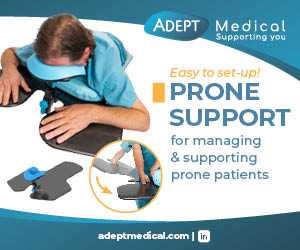|
E-Newsletter • September 2022 |
Editor's E-Note
Low back pain can be debilitating and is a difficult condition to treat. Minimally invasive treatment options have made progress in recent years, but there is still much work to be done. This month, we're highlighting a promising study that was presented at the SIR 2022 annual meeting.
Enjoy the newsletter. Let us know what you think about it on Twitter and/or Facebook.
— Dave Yeager, editor |
|
|
|
▼ ADVERTISEMENT
 |
Study Suggests Injectable Gel May Greatly Reduce Low Back Pain
An experimental formulation of a hydrogel, injected into spinal discs, proved safe and effective in substantially relieving chronic low back pain caused by degenerative disc disease (DDD), according to new research presented at the Society of Interventional Radiology Annual Scientific Meeting in Boston. Hydrogels have been used for a number of years to treat DDD, but the current study is the first test of this particular gel in humans.
After six months, all participants in this small study reported significantly less low back pain—declining from an average self-reported pain level of 7.1 down to 2 on a scale of 0 to 10. They also experienced greatly improved physical function, with average scores falling from 48 to 6 on a questionnaire to gauge the impact of low back pain in preventing patients from the ability to perform normal activities.
“If these findings are confirmed in further research, this procedure may be a very promising treatment for chronic low back pain in those who’ve found insufficient relief from conservative care,” says lead author Douglas P. Beall, MD, FSIR, chief of radiology services at Clinical Radiology of Oklahoma. “The gel is easy to administer, requires no open surgery, and is an easy procedure for the patient.”
▼ ADVERTISEMENT
 |
CT and AI Reduce Radiation, Provide Greater Bone Disease Detection
Boasting a greater bone disease detection rate and lower dose of radiation, a new photon-counting CT paired with AI noise reduction offers promising results, according to a new study.
PSMA PET/CT Efficiently Detects Recurrent Cancer
The chance for recurrence following a radical prostatectomy poses treatment issues for patients and radiologists. A new imaging technique is making detection much easier.
Imaging of Brain Protein Yields Promising Results
Aggregation of α-synuclein, a neuronal protein, has been linked to several neurodegenerative disorders, such as Parkinson’s disease. Researchers have found a way to successfully visualize the protein, which could lead to diagnostic innovations.
Crowdsourced Machine Learning Improves Rheumatoid Arthritis Quantification
A JAMA Network Open study found that crowdsourced machine learning aided radiologists in quantifying joint damage from rheumatoid arthritis, offering a promising outlook for the future of imaging diagnostics. |
“Not only will our patients continue to receive the highest possible service and advanced diagnostic imaging, but they will also be able to take advantage of the fastest 3T scans available. This is useful in many ways, but particularly for patients that are children, are claustrophobic, or living with disabilities. It’s going to make them feel much more comfortable knowing they can still receive detailed and advanced image quality, but will take much less time.”
|
|
|
COVER STORY
Contrast Considerations
A COVID-19 outbreak in Shanghai, China, resulted in a shortage of contrast media. Radiology departments identify the issues it presented and address ways of preventing future hindrances.
FEATURE
Welcome to the Federation
Federated learning, a kind of AI model training that does not require data sharing, could revolutionize AI algorithms, giving them a wider pool of data from which to make predictions with greater accuracy.
|
|
|
| Advertising Opportunities |
Have a product or service you want to market to radiology professionals? Utilize the reach of Radiology Today Magazine to accomplish your marketing goals. Email our experienced account executives today at sales@gvpub.com or call 800-278-4400 for more information.
|
| © 2022 Radiology Today Magazine |
|
|